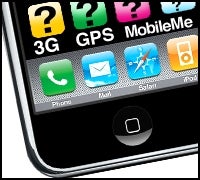 |
Monthly fees aside, it looks like the cost consumers will pay for the new 3G iPhone isn’t that much more than what it costs Apple (NASDAQ: AAPL) to make them.
iSuppli, a research and advisory firm known for its detailed “teardown” analysis of what products cost to make, has just issued its early take on the iPhone’s bill of materials (BOM).
The first 3G iPhones aren’t due out until July 11, so in this case iSuppli analysts did what the company calls a virtual teardown.
Their conclusions are essentially estimates of what it costs Apple to build the new device based on what Apple has detailed publicly, and iSuppli’s analysts knowledge of and contacts with parts suppliers in the areas of semiconductors, displays, mobile handsets, consumer electronics and wireless infrastructure.
“We made some assumptions about what was changing in the 3G iPhone and what was staying the same,” Jagdish Rebello, director and principal analyst for iSuppli, told InternetNews.com.
Rebello said his sources confirmed reports that Apple is receiving a subsidy of about $300 from AT&T (NYSE: T) for every iPhone sold in the United States.
The 3G iPhone will sell for $199 plus a two-year contract of monthly fees. iSuppli pegs Apple’s BOM and manufacturing cost total to be $173 per unit.
Apple’s R&D and marketing costs are not factored in. The top five most expensive components are the device’s 8GB NAND flash memory ($22), an improved touchscreen display ($20), application processor ($13.50) and digital baseband chip with High-Speed Download Packet Access, known as HSDPA
iSuppli said the original 8GB iPhone cost Apple about $226 to make, and Apple has since benefited from component price declines for a 23 percent reduction in hardware costs.
“The new iPhone is significantly less expensive to produce than the first-generation product, despite major improvements in the product’s functionality and unique usability, due to the addition of 3G communications,” Rebello said.
Apple did not return a request for comment at press time. The company traditionally doesn’t comment on details of its product design outside of its events. The 3G iPhone was previewed by CEO Steve Jobs and other Apple officials earlier this month at the company’s Worldwide Developer’s Conference.
[cob:Special_Report]Since its release, the iPhone has received publicity and “buzz” despite a tiny presence in the overall market for mobile phones.
“We don’t see Apple becoming a dominant player in market share for the foreseeable future,” Rebello said. “But it’s an innovator that’s helping the market grow and helping to define a lot of advances in user interface.”
He said market leader Nokia (NYSE: NOK), for example, has about a 40 share of the market, while the iPhone at 10 million units will reach 1 percent share worldwide.
Of course the iPhone’s impact on the market has been impressive given it’s only been available for about a year.
Rebello also said the 3G iPhone has some improvements in the touch technology that will help it maintain its competitive advantage. “There are a lot of iPhone wannabes,” he said. “But Apple still has an advantage in user interface, and it’s kept its sleek design.”


